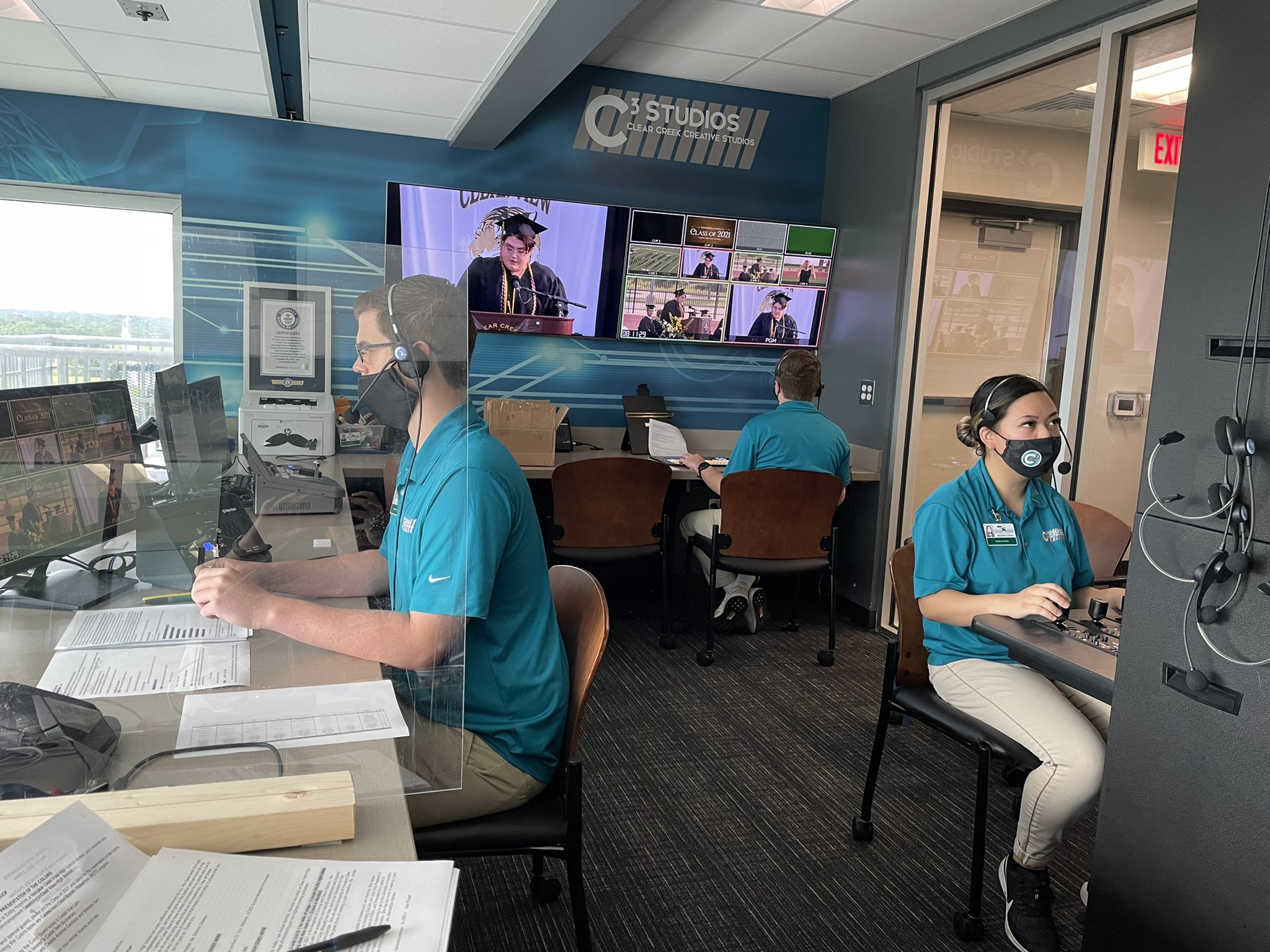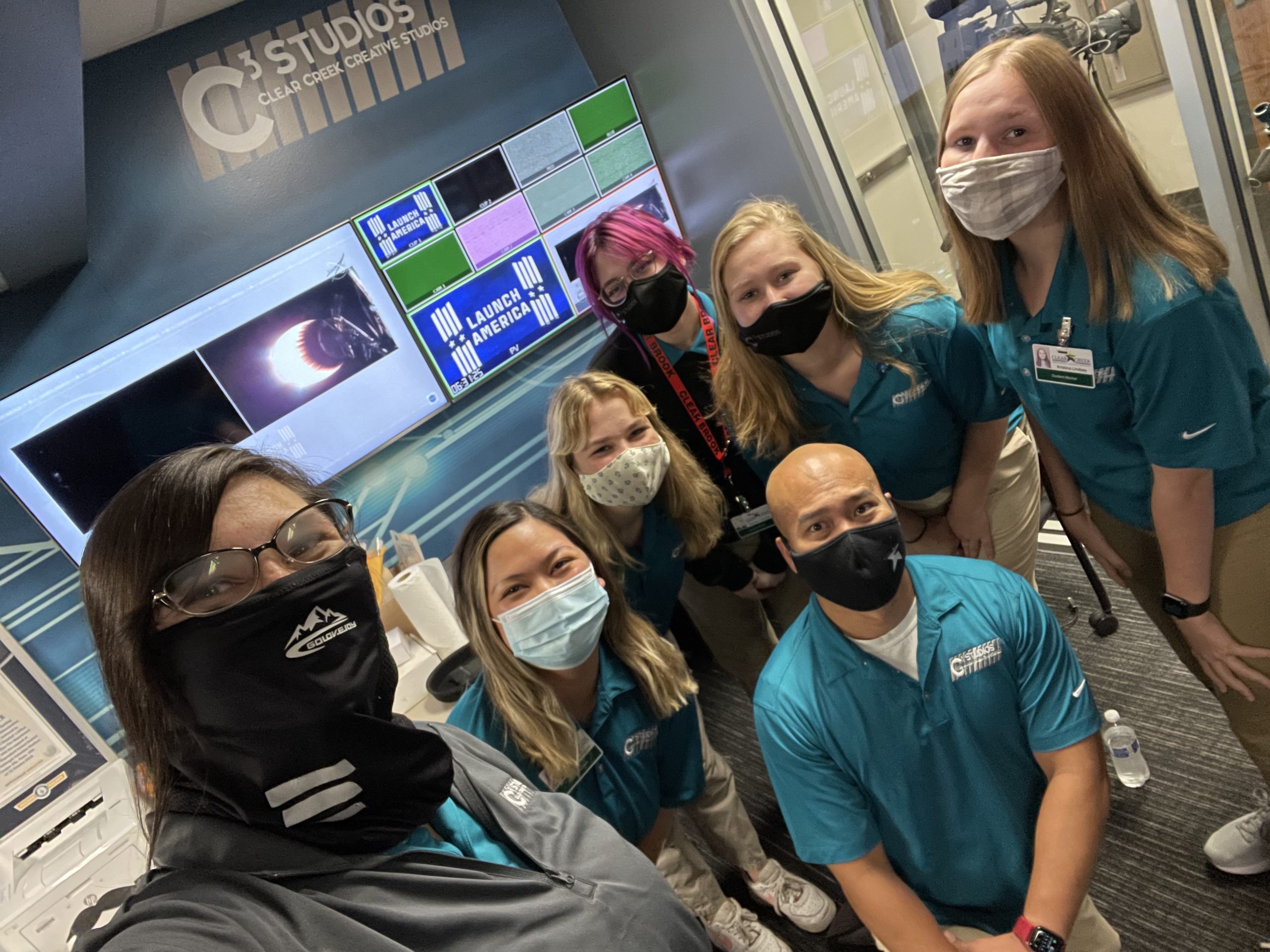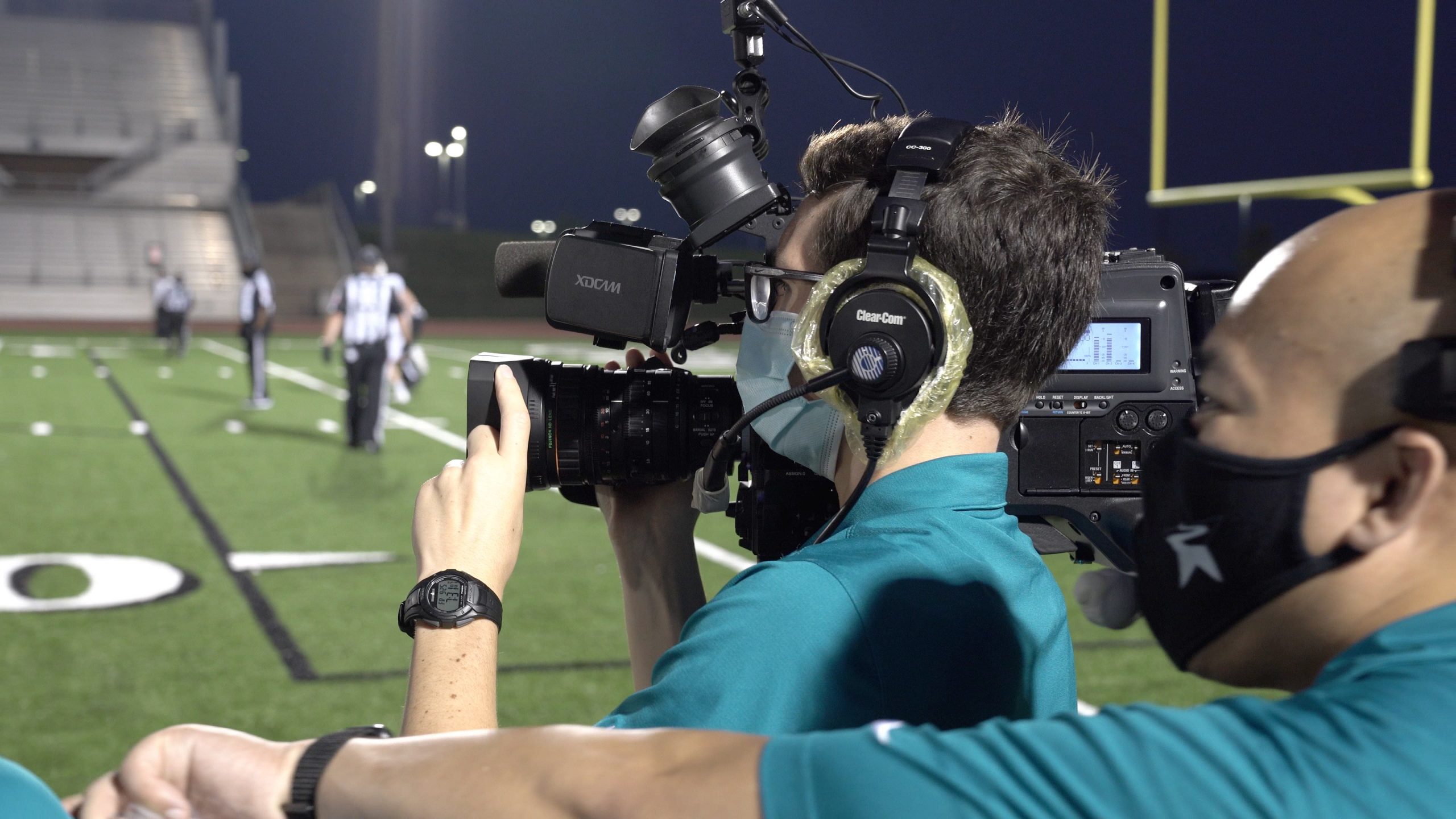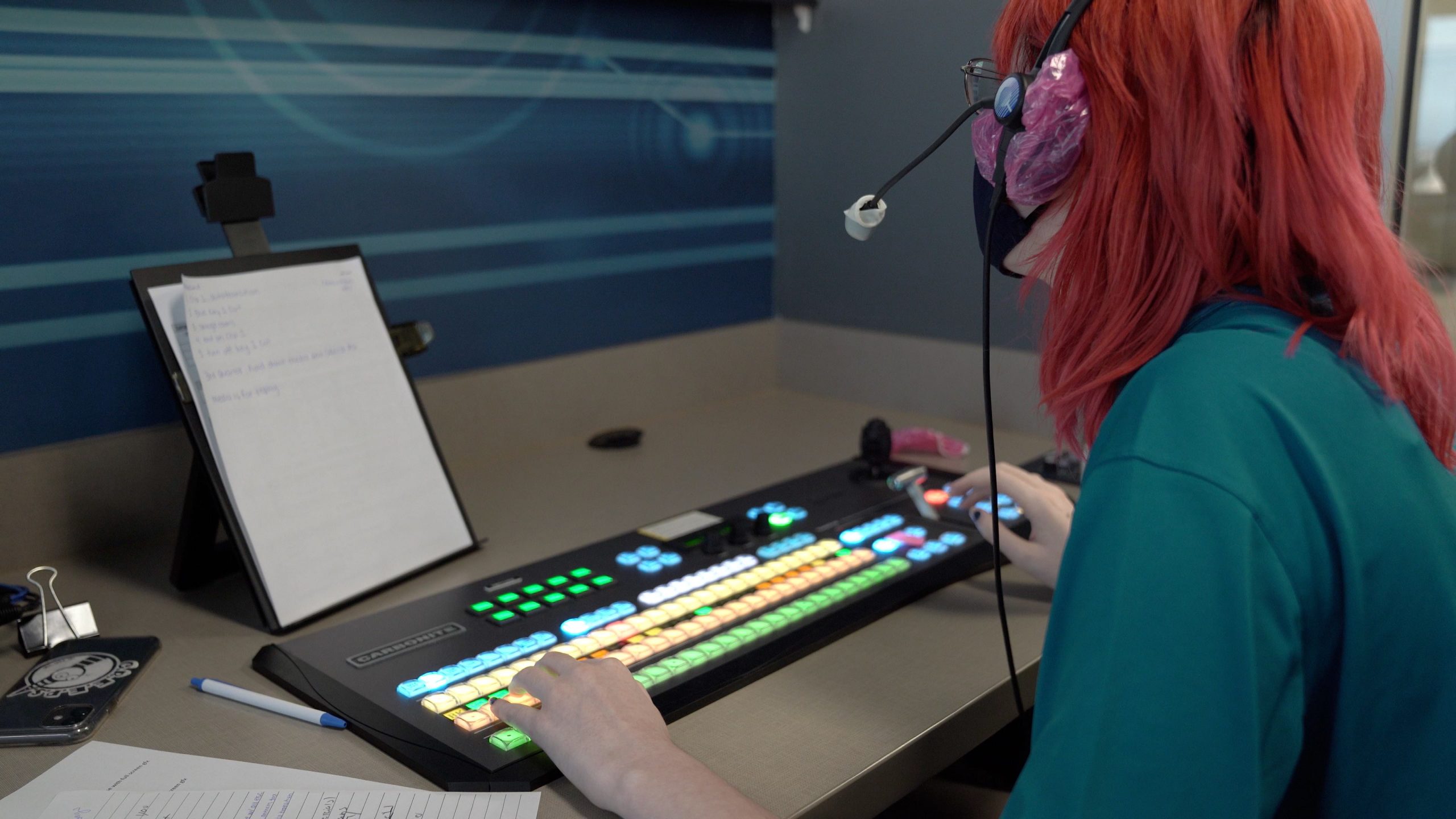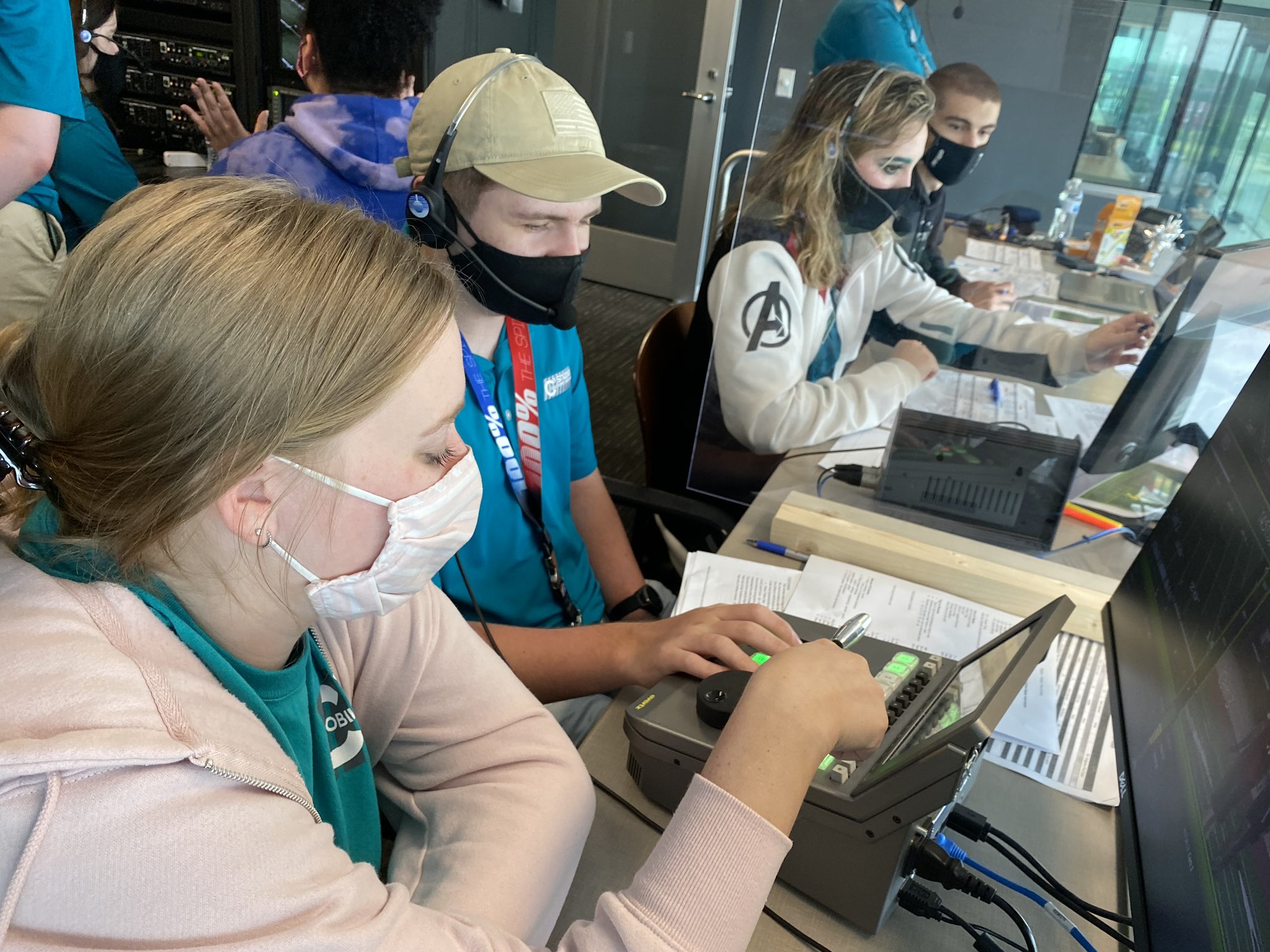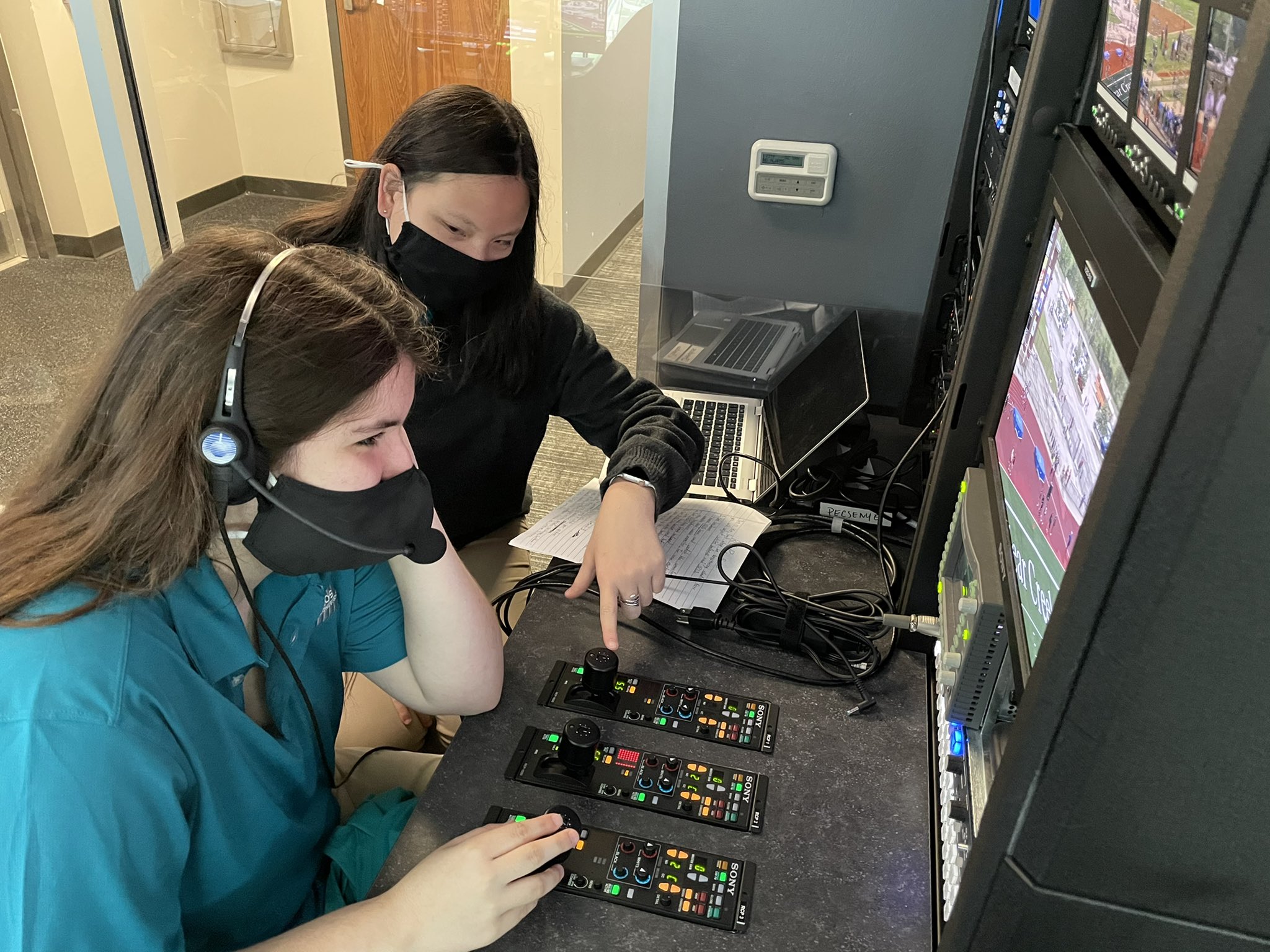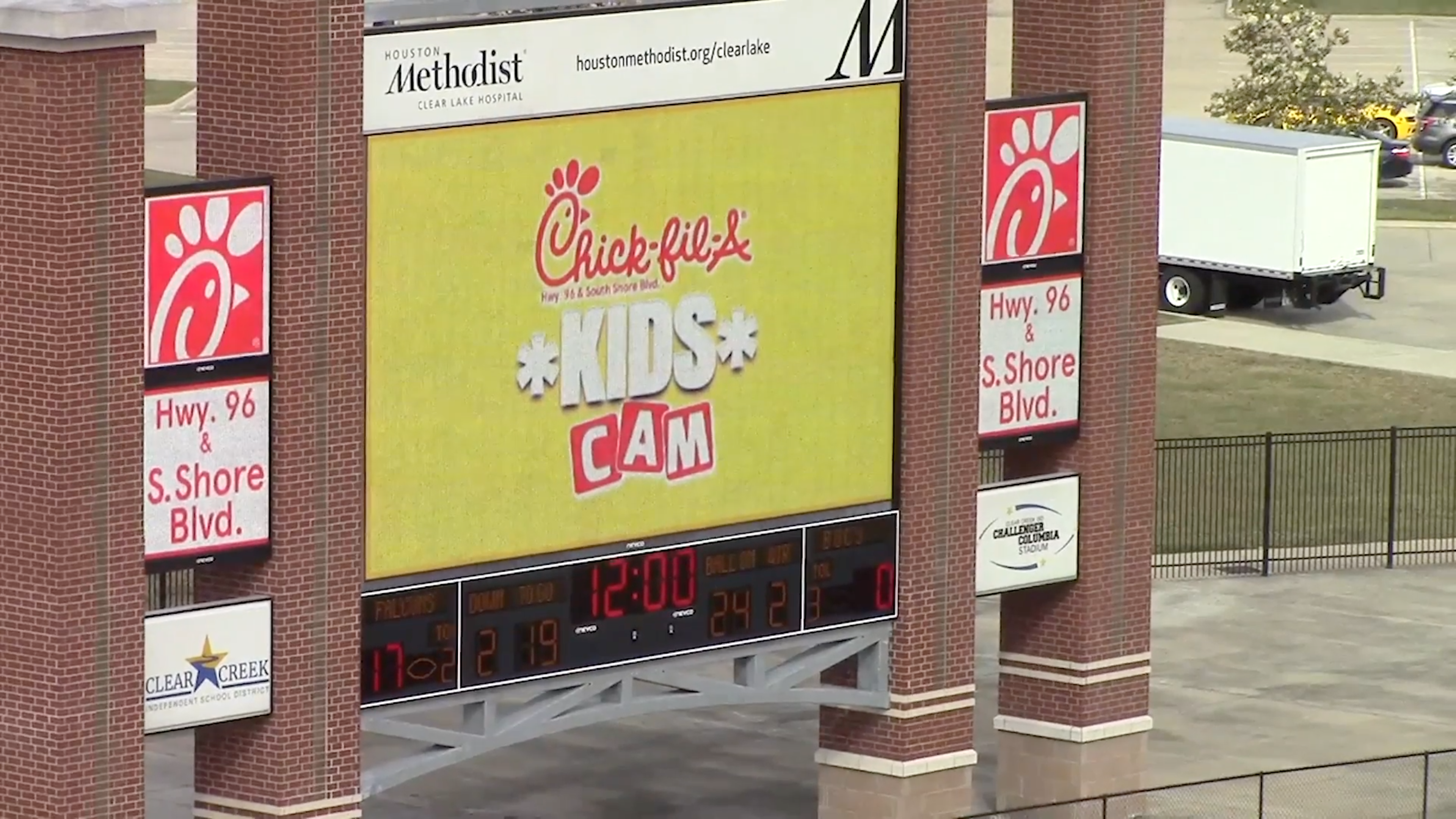C3Studios Gives High School Students in Texas a Taste of Pro-Level Production at CCISD Challenger Columbia Stadium
The five-year-old venue hosts the district’s five football programs
Story Highlights
High school athletics, especially football, are a totally different breed in Texas. With more than a thousand institutions competing for a championship, sports facilities in the Lone Star State rival some of the most technologically advanced in the country. In the Clear Creek Independent School District (CCISD), about 25 minutes outside Houston, C3Studios enlists the area’s top AV students to drive live event production at Challenger Columbia Stadium and surrounding venues.
“We built this stadium and control room [in 2016] to give these kids an opportunity to be hands-on,” says Amber Pecsenye, program director, C3Studios. “I think the student interest has grown a lot, and the quality of kids that we’re getting is amazing.”
Humble Beginnings: Basic Equipment To Teach Fundamentals
Now a formidable force in the Texas high school system, C3Studios developed gradually over the past five years. Starting as a teacher in the district in 2010, Pecsenye had a background in production for local professional teams, such as the MLB’s Astros, NFL’s Texans, and MLS’s Dynamo. After receiving the green light in 2013, the program reached out to BTS Houston, the company responsible for technological integration of control rooms for the Houston Rockets and other high-profile organizations. To start, the budget called for basic equipment that could teach students the fundamentals.
“This was the first time [BTS Houston] had ever done a high school control room,” Pecsenye says. “We first had a NewTek 3Play, but we have definitely raised the bar and built this out.”
As the program evolved, so did the structure of its staff. Since this facility is run by a district and not a single school, the interviewing and hiring process is quite extensive for a high school–run production. Working from teacher recommendations, stellar examples of work done in the classroom, and a submitted application, Pecsenye and her team choose the best 10-20 students. On any given show, 13 spots are filled from among those chosen. And, because the program is not considered part of an educational curriculum, the students selected are considered paid employees, their wages coming from marketing revenue for football broadcasts.
“They apply as first-year AV students from our five high school programs,” Pecsenye explains. “Then we get everyone together for a preseason scrimmage. This year, we hosted a flag-football charity event to give them some training.”
Behind the Control-Room Door: Sony, Ross Video Gear
Five schools — Clear Creek, Clear Brook, Clear Lake, Clear Springs, and Clear Falls — call Challenger Columbia Stadium their football home, and C3Studios covers some of the state’s biggest high school bouts with high-end equipment and workflows.
At the heart of the SDI-based control room is Ross Video’s Carbonite production switcher with ProPresenter software. An upgrade this past season added an Evertz DreamCatcher replay server. On the field, the live stream is anchored by Sony PXW-X320CE cameras (two high, one end zone, one wireless). A handful of Teradek Bolt transmitters send the signals to the production department up top. Although football is king, other live-streamed events are produced by all five schools: track and field, graduations, band performances, and even the opportunity to work with NASA’s Space X Initiative.
With this much success, C3Studios has expanded and established the C3 Mobile team to handle events outside of Challenger Columbia Stadium. As one of its main locations, from January to June, the new crew handled 15 events taking place at the nearby Robotics Event Center. Centered on competitive robotics, action at this venue is captured via six Marshall PTZ cameras per playing surface in a makeshift gymnasium. All the cameras can be operated by a single individual, but the department is upping the ante by pushing out three simultaneous live streams of the matches with a crew of 24 students.
“We worked with BTS again [for that venue],” says Pecsenye. “We went to Blackmagic [Design] for our router and have two wireless cameras with that setup for a smaller footprint.”
Gameday Experience: Videoboard Show, Live Stream in Educational Environment
The students involved in C3Studios practice their skills in a fast-paced setting. Along with Pecsenye, Assistant Director Harry So runs the show from field level. Besides making sure that the technology, especially the Teradek transmitters, are working properly, he’s responsible for providing feedback and positive teaching moments for the students. In this unique setting, these adolescents are asked to adapt on the fly and learn from miscues as they go.
“There are some mistakes that happen,” says So, “so we tell the kids that it’s okay to mess up but to try to not make that same mistake again. I’m really looking for attitude: who can be a hard worker? Are they able to pick up things fast, take criticism, and learn from it? This is a high-pace and stressful environment.”
The crews are at the reins of the digital live stream, but there’s an additional production layer at Challenger Columbia Stadium: the in-venue videoboard show. The staff pushes visual content to a 34- by 19-ft. main videoboard in the back of one endzone and to four side screens with rotating images. Nevco installed the main structure. Pecsenye worked with the school district’s marketing and communications departments to develop sponsorship opportunities, which are played during the action.
“Our campus has helped make the intro videos and put together highlights,” she says. “We try to make it very district-oriented. One of our auto dealerships supports ‘Under the Hood,’ which features a specialty program like culinary, dentistry, or metal manufacturing. We also do a Chick-Fil-A Student Spotlight, where we talk about a club that has done a lot of great things on campus.”
Aside from sponsorships, the videoboard is populated by the customary fan activations of a high school football game: Fan Cams, Dance Cams, Flex Cams. Before the game, related content — such as Keys to the Game and interviews with the head coach — are shown.
Busy School Year: COVID-19 Crunches Packed Events Schedule
As with everything in sports, the COVID-19 pandemic had an impact on the CCISD schedule. Students participated in remote learning, and, on the sports side, productions and chances for in-person experience were very different from those in the past.
“In the spring of 2020,” says Pecsenye, “kids weren’t allowed in [the control room] because it was such an unknown world. Two weeks before the season started, we partnered with the robotics program to create the polycarbonate dividers [at each station]. We didn’t have any special protocol, but the deal was that, if you’re quarantined from campus, you’re quarantined from here.”
Because of COVID-19, C3Studios had to facilitate 20 events in 13 weeks. That might be considered a hindrance to positive learning, but, from So’s perspective, the constant flow of live productions provided the students extra reps and real-time practice.
“It seemed like they got more experience,” he points out. “We also have our previous-year students on board to help train the incoming students. [This way], we have them overlap towards the end of the year when the seniors graduate and things begin to shift.”
Despite the obstacles, the pandemic birthed a handful of new workflows. To accommodate individuals who couldn’t travel to Challenger Columbia Stadium for important events like graduation, C3Studios expanded its live-streaming options to include these socially distant ceremonies. Though necessary at first, the approach will continue to be used moving forward.
“We feel that there’s a need for a multi-camera live stream,” says Pecsenye. “With COVID, we’ve had a push for live streaming, but I think it’s here to stay: [for example,] when someone in Idaho wants to watch a family member walk across the stage for her award, we can help provide that.”
Local Pipeline: A Path Toward Success After High School
At the high school level, C3Studios is pushing the envelope when it comes to work ethic and ingenuity. More important, the effort is building a figurative pipeline that will strengthen the workforce of tomorrow. Each year, the program is developing talent for networks like ESPN, professional teams like the Texans, and rising stars at the collegiate level like the University of Houston. Continuing to improve its high-end facility and harness the passions of the students who become part of the crew, the program is focused on a brighter future for the industry.
“As school-board members walk through this space with our superintendent,” says Pecsenye, “they understand what we’re doing and see the potential for creating a future job. We’re all here to teach our kids a skill set that’s going to take them farther in life.”
